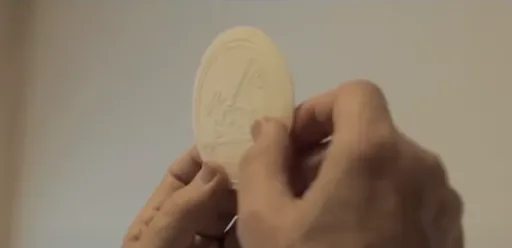
Washington D.C., Apr 30, 2022 / 06:00 am (CNA).
At the heart of the Church is the Eucharist. The presence of Our Lord’s Body and Blood has the ability to transform lives in a variety of ways, and a new documentary film seeks to illustrate that.
EWTN News Nightly recently spoke with Lucia Gonzales, founder of Bosco Films, about ‘Alive’, which seeks to highlight the transformative power of the Eucharist through the lives of five people.
“It’s a very special documentary,” Gonzales said, “because it’s just people speaking about something that happened to them … how their life was before and after this moment in adoration, without knowing what was happening there, that changed their life forever.”
Gonzales described the film’s positive reception in Spain and Mexico, which took some by surprise.
“It was released exactly one year ago … in six theaters … [and] it was a huge success, ” Gonzales recounted. “[The movie] one year ago was sold out in all the seasons and in all the theaters … it was something that surprised a lot in the cinema industry because Alive doesn’t have a well-known director, it doesn’t have stars, [it didn’t have a high budget] to make it and for advertising. It was just people speaking to one another.”
Speaking about the film’s ability to resonate with so many people, Gonzales spoke about how she felt that the pandemic ultimately made people more open to talking more about spirituality. Additionally, the amount of continual hurt and pain that it has caused worldwide has allowed for the film’s themes to touch the hearts of its moviegoers as well.
Gonzales said it is the authenticity of the experiences in the film and how they are expressed to the moviegoer that, she believes, gives the film the heart necessary to inspire viewers.
“It’s just people speaking to you and telling you something that happens to them, ” Gonzales said, “and when you see and hear the truth, I think we can recognize it absolutely.”
If you value the news and views Catholic World Report provides, please consider donating to support our efforts. Your contribution will help us continue to make CWR available to all readers worldwide for free, without a subscription. Thank you for your generosity!
Click here for more information on donating to CWR. Click here to sign up for our newsletter.




One day showing that didn’t get much advertising… Just like the movie about the baths in Lourdes… It’s seen all over Europe but here in ‘merica… Nope
I went to see the Movie Father Stu this past week. I knew it was playing in a particular theater because I had been to that theater days before and seen the listing over the cashier. HOWEVER, when I went to “Moviefone” online, Father Stu was not listed as showing AT ALL. Then I put Father Stu into the Moviefone search function and it came up as “not listed”. I dont know if there was simply no budget to advertise a listing for this film, of if someone made a decision not to list a “religious” film at Moviefone. However, I finally found the listing by going to the general AMC website. I found the whole experience odd. Had I not already been aware the film was playing at a particular location, I would have assumed it was not showing there at all. I guess only garbage gets an advertising budget. But why would a theater provide the listings for only SOME of the movies they were showing??
The movie will enhance your belief and faith, no matter where on the spectrum it lies. Definitely worth your time and effort to find and view. The film, in Spanish with English subtitles here in the U.S., played for only one day at select theatres, without much (any?) mainstream advertising outside Catholic media. I simply stumbled upon it and took the chance. The theater held a scant few of us, together in awe at the film unfolding. The projectionist forgot to start the film at the posted time; we had to go remind him that showtime was 10+ minutes late in starting.
The film is as described: Intermingling of 5-6 stories of individual lives transformed after discovery of the Eucharist, specifically Adoration. Powerful full-front facial images of all individuals, together with friends or acquaintances who confirmed changes in people’s lives. Particularly compelling were the atheist and non-believing skeptic who went along with a Catholic friend to adoration or to Mass, not expecting anything, not pressured in any way to attend, but who went due to lack of anything better or out of pure curiosity, puzzled by the friend’s or acquaintance’s commitment to adoration or to Mass. Then WHAM. Either at once or after some time still spent puzzling about the something, someONE happened to the skeptic, the atheist, the juvenile delinquent, the anomistic young none, the couple facing a difficult pregnancy, etc.
Artistically, the film powerfully wows. The initial interviews appear a bit of a confused whirlwind. Who are these people and how do their stories fit together? is the question asked at the start then answered by story end. Beautiful ending depicting a Baptism (only the beginning). One will leave the theater, bearing prayers for the seminarian’s parents, about whom I won’t spoiler alert the reader.
Go see it if you have the chance.